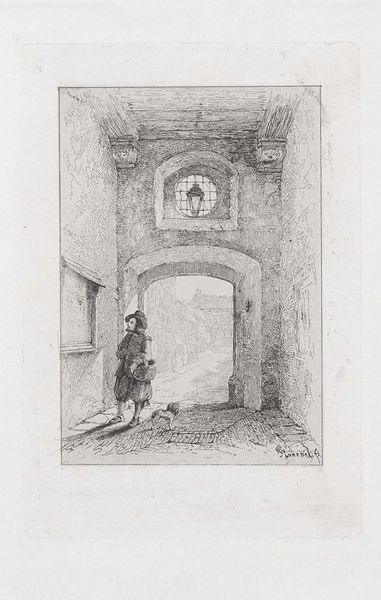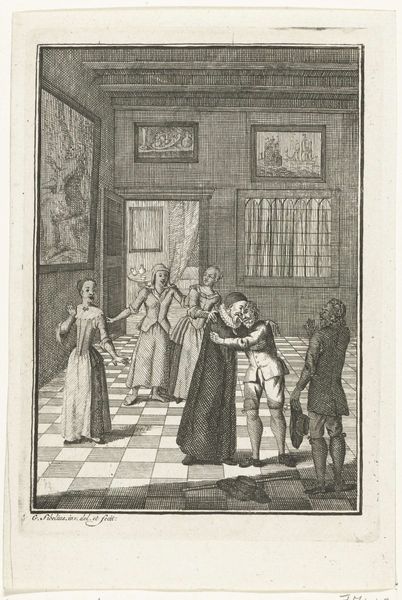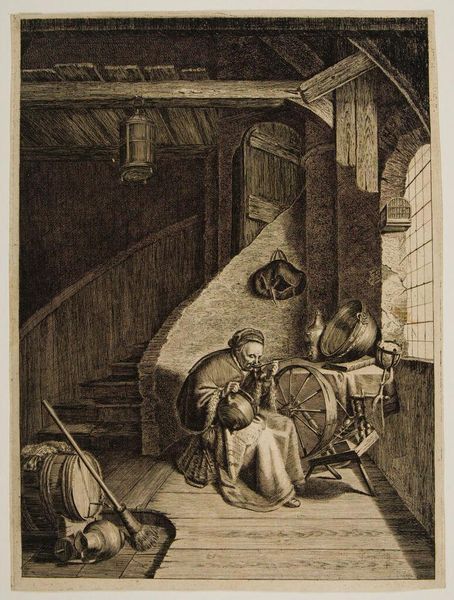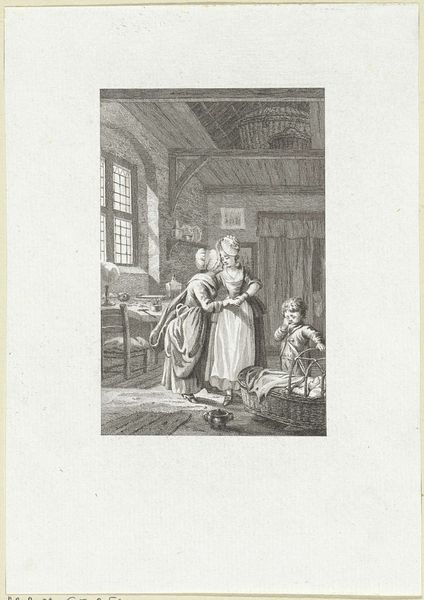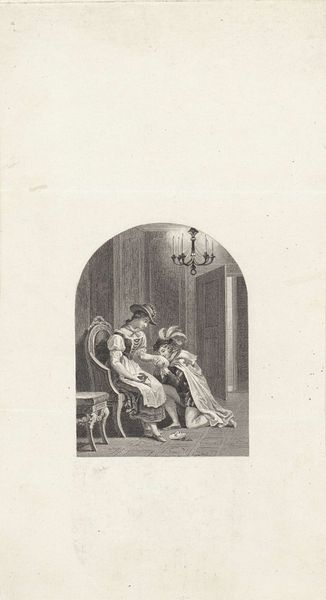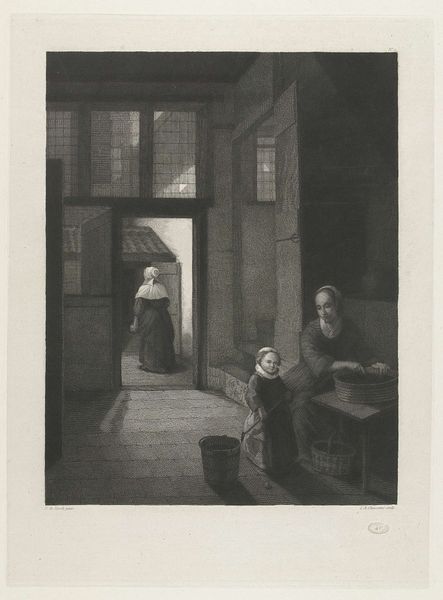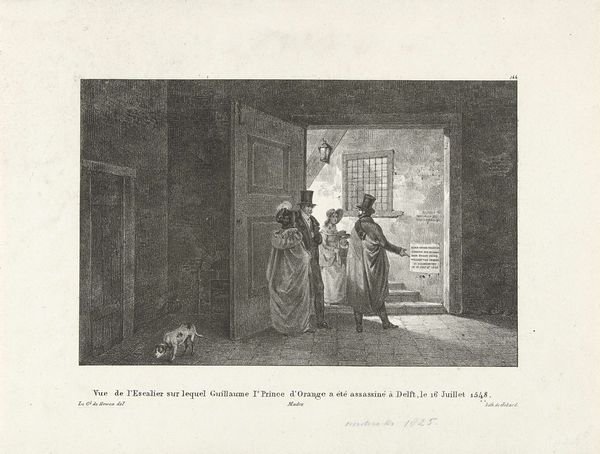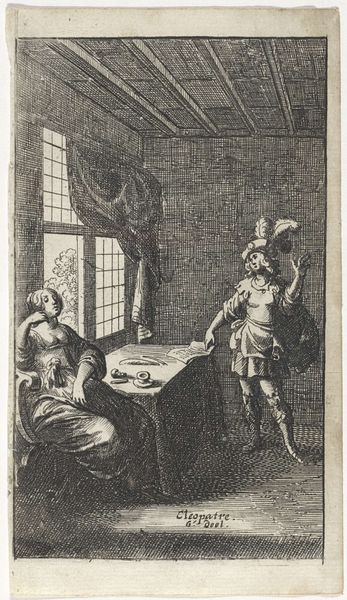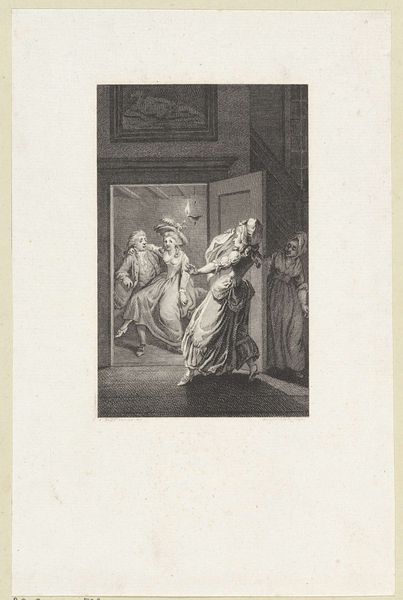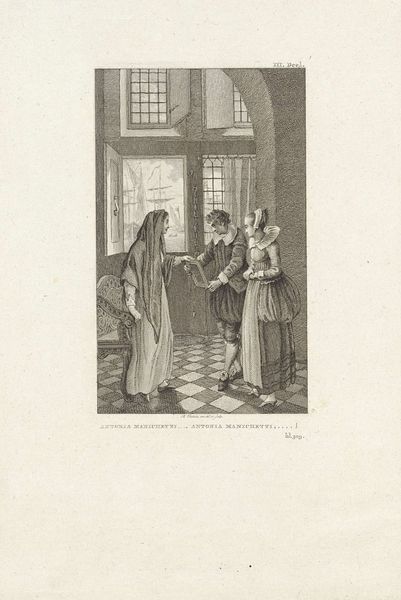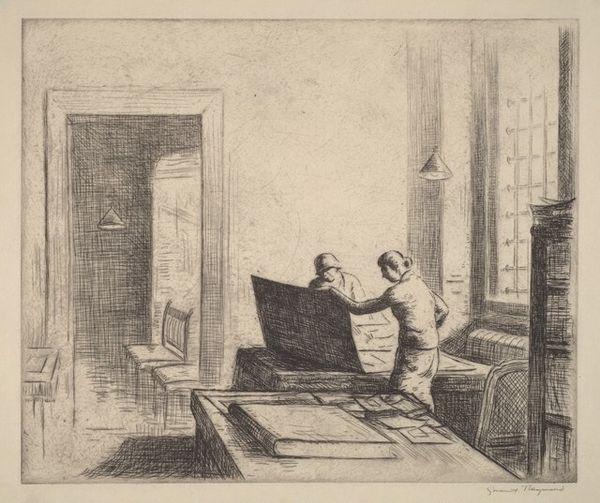
print, engraving
# print
#
old engraving style
#
genre-painting
#
history-painting
#
engraving
#
realism
Dimensions: height 270 mm, width 190 mm
Copyright: Rijks Museum: Open Domain
Curator: This piece is a mid-19th century engraving called "Trap waar Willem van Oranje is vermoord" – or "Staircase where William of Orange was murdered." The artist is unknown. Editor: It feels so... contained. Almost claustrophobic. The light is trapped by those stairs and that barred window. There's a bleakness that settles right into your bones. Curator: Indeed. The engraving's stark realism, that kind of hyper-detailed architectural rendering, coupled with the historical subject matter... it’s designed to ground you in a specific time and place. Look at the dark, shadowy arch framing the scene. Editor: Yes, the arch! It’s like looking through a keyhole into a pivotal moment. Stairs often symbolize transitions, and this one leads up to… well, assassination. That caged window feels intensely symbolic too, doesn't it? A feeling of being cornered. Curator: Absolutely. Windows often serve as metaphors for hope or escape. That barred window becomes a poignant reminder of William's fate; trapped by both his enemies and, perhaps, by his own political obligations. The group standing there... the mother, the child pointing… they are witnesses. Or maybe just everyday people now confronted with history made concrete. Editor: They give it a strangely intimate touch, don’t they? Almost like turning a tragedy into a tourist destination. This happened *here*, on *these* steps. Feel the echoes! Is that disrespectful or a powerful way of preserving memory? It walks that line, doesn't it? Curator: A valid point. Memory is rarely tidy. It's complex and messy. The print reminds us that historical events don’t just happen in textbooks. They occur in real spaces, affecting real people, who then pass on those stories and the echoes of what happened. Editor: Looking at it now, I see that preservation, even a bit romanticized, might be the key element. The print, itself, acts like a window to the past. Curator: Perhaps. Ultimately, I think it’s an attempt to give form to an event, to make the past present again. A ghost made visible. Editor: A sobering and effective ghost indeed.
Comments
No comments
Be the first to comment and join the conversation on the ultimate creative platform.
